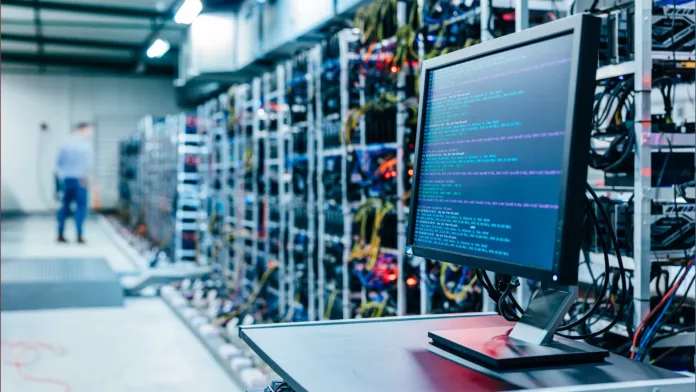In the rapidly evolving digital landscape, the quest for understanding how to mine cryptocurrency has become increasingly significant. Cryptocurrency mining, the backbone of blockchain security, plays a pivotal role in verifying transactions and adding them to the public ledger. This process is not only central to the maintenance of the blockchain’s integrity but also presents an opportunity for individuals to earn block rewards. As cryptocurrencies continue to gain mainstream acceptance, the knowledge of how to mine crypto, including the intricacies of mining software, electricity costs, and computational power, becomes essential for enthusiasts looking to dive into the world of digital currency mining.
This article offers a comprehensive guide on how to start mining cryptocurrency, covering the fundamental aspects such as what is cryptocurrency mining, the selection of suitable mining hardware, and understanding the hash rate and consensus mechanism. Readers will be navigated through the types of mining equipment, a step-by-step guide to start mining, and how to choose the right cryptocurrency. Additionally, critical considerations such as evaluating mining profitability, managing electricity costs, and the decision between solo mining versus joining a mining pool will be explored. Whether you’re curious about how to mine cryptocurrency on PC or seeking to optimize your mining setup for maximum efficiency, this guide provides the necessary insights to embark on your mining journey.
Understanding Cryptocurrency Mining
What is Cryptocurrency Mining?

Cryptocurrency mining is the process by which new coins are introduced into circulation and transactions are verified across a blockchain network. Miners use powerful hardware and software to solve complex mathematical problems, generating a cryptographic number that must meet specific criteria set by the blockchain’s difficulty algorithm. The first miner to solve the problem receives cryptocurrencies as a reward, incentivizing their participation in the network’s maintenance. This method not only facilitates the creation of new coins but also secures the blockchain by verifying transaction integrity and preventing double-spending.
Proof of Work vs. Proof of Stake
Proof of Work (PoW) requires miners to solve cryptographic puzzles using computational power, which in turn validates transactions and secures the network. This process is highly energy-intensive and has raised concerns regarding its environmental impact. Miners compete to solve these puzzles, and the first to do so earns the right to add a new block to the blockchain and receive the associated rewards.
Proof of Stake (PoS), on the other hand, selects validators based on the number of coins they hold and are willing to “stake” as collateral. Unlike PoW, where the probability of solving puzzles and earning rewards is dependent on computational power, PoS allocates mining power based on the proportion of coins held by a validator. This method significantly reduces the amount of energy required, as it eliminates the need for extensive computational work. PoS not only lowers energy consumption but also enhances network security by making it less profitable for attackers since they would need to own a substantial amount of the cryptocurrency to influence the network.
Both consensus mechanisms play crucial roles in the functionality and security of blockchain technologies. While PoW is celebrated for its robust security measures, PoS is recognized for its efficiency and lower environmental impact, making it a popular choice for newer cryptocurrencies. As the industry evolves, the shift from PoW to PoS could lead to more sustainable and scalable blockchain solutions.
Related Read: CleanSpark Expands Bitcoin Mining Footprint with Acquisition of 5 Facilities in Georgia
Types of Mining Equipment
ASIC Miners
Application-Specific Integrated Circuits (ASICs) represent a significant evolution in cryptocurrency mining technology. These devices are designed exclusively for mining purposes, offering unmatched efficiency and speed compared to general-purpose hardware like CPUs and GPUs. ASICs are highly specialized, focusing solely on mining activities, which allows them to perform their tasks at exceptional speeds, greatly enhancing the chances of earning block rewards. Despite their advantages, ASICs come with challenges, including limited flexibility and high initial costs, making them a substantial investment for serious miners.
GPU Miners
Graphics Processing Units (GPUs) are versatile tools in the mining arsenal, capable of handling complex calculations required for blockchain mining. Their parallel processing capabilities significantly enhance mining performance, making them suitable for mining a variety of cryptocurrencies. GPUs strike an optimal balance between cost and performance, providing a more accessible entry point for individual miners and smaller operations. They are not only used for mining but also have resale value and other applications outside of mining, which adds to their appeal.
CPU Miners
Central Processing Units (CPUs) are the basic form of crypto mining hardware, allowing anyone with a desktop computer to participate in mining. Initially, CPUs were the primary hardware used for mining, relying on their processing power to solve complex algorithms and validate transactions. Although less powerful than GPUs and ASICs, CPUs offer the advantage of being widely available and relatively inexpensive. They are particularly useful for mining altcoins that do not require extensive computational power. Moreover, CPUs are integral to setting up a mining operation, as they run the mining software and coordinate the activities of other mining hardware.
Step-by-Step Guide on How to Mine Cryptocurrency
Choose a Cryptocurrency
Selecting the right cryptocurrency to mine is crucial for profitability and sustainability. Factors such as market trends, mining rewards, and the environmental impact of the mining process play a significant role. Beginners should consider cryptocurrencies that provide a balance between accessibility and potential profits, while also taking into account the energy consumption associated with mining each cryptocurrency.
Select Mining Hardware
The choice of mining hardware significantly affects the efficiency and success of mining operations. ASIC miners, known for their high efficiency and speed, are suitable for mining well-established cryptocurrencies like Bitcoin. However, they are expensive and less flexible. GPU miners offer a good balance of cost and capability, ideal for altcoins. CPU mining, while less efficient, provides an entry point for beginners or those interested in mining less demanding cryptocurrencies.
Set Up a Crypto Wallet
Before starting mining, setting up a secure crypto wallet is essential to manage and store mined coins. Wallets come in various forms: software wallets (hot wallets) for ease of access and transactions, hardware wallets (cold wallets) for increased security by storing keys offline, and custodial wallets that are managed by third parties. Each type has its benefits depending on the user’s needs regarding security, convenience, and frequency of transactions.
Configure Mining Software
Installing and configuring mining software is a critical step. The software should be compatible with the chosen hardware and cryptocurrency. For instance, Phoenix Miner and NB Miner offer robust solutions for different algorithms and hardware setups. Users must download the software from reliable sources and configure it by entering details such as the mining pool’s address, the wallet address, and specific hardware settings. This setup ensures optimal mining performance and security.
Join a Mining Pool
Joining a mining pool can significantly increase the chances of earning mining rewards, especially for those with limited hardware capabilities. In a mining pool, miners combine their computational power to enhance their chances of solving blocks and earning rewards. It is important to choose a reputable pool with transparent fee structures and payout methods to ensure reliability and profitability. Pools vary in size, payout schemes, and fees, all of which can impact overall earnings.
Choosing the Right Cryptocurrency
Factors to Consider
When selecting the right cryptocurrency to mine, several critical factors must be considered to ensure profitability, sustainability, and accessibility. These factors include:
- Profitability: Assessing the current mining rewards and potential monthly profits is crucial. Higher rewards and profitability indicate more lucrative opportunities for miners.
- Accessibility: It is essential to evaluate the ease of mining and the availability of necessary hardware. This ensures that miners can participate efficiently without significant obstacles.
- Sustainability: The energy consumption and environmental impact of mining operations should be considered. Sustainable practices are vital for minimizing environmental damage and for the long-term viability of the mining operations.
- Privacy and Security: Evaluating the blockchain features such as anonymity and security measures is important. Privacy-focused cryptocurrencies offer enhanced anonymity, while robust security protocols help safeguard against potential threats.
- Market Trends: Understanding market demand and potential growth of each cryptocurrency helps miners anticipate shifts in demand and capitalize on emerging opportunities.
Popular Cryptocurrencies to Mine
Several cryptocurrencies are particularly suited for mining at home due to their lower hardware requirements and potential profitability:
- Dogecoin (DOGE) has gained popularity and is designed to add new coins each year, offering incentives for miners.
- Ethereum Classic (ETC) provides an alternative for those who prefer the original Ethereum blockchain, and its resources formerly used for ETH can now be applied to mining ETC.
- Monero (XMR) is notable for its resistance to ASIC hardware, making it ideal for mining with home computers.
- Zcash (ZEC) and Horizen (ZEN) use the Equihash algorithm, which is resistant to ASIC, allowing GPU miners to participate effectively.
- Ravencoin (RVN) and Vertcoin (VTC) are both ASIC-resistant, making them suitable for miners who use GPUs at home.
- Grin (GRIN) employs a MimbleWimble algorithm and is designed to be ASIC-resistant, providing a good option for home miners.
These cryptocurrencies offer various benefits, from lower entry costs to resistance against specialized mining hardware, making them accessible for individuals looking to start mining from home.
Evaluating Profitability
Costs to Consider
When evaluating the profitability of cryptocurrency mining, several financial elements play a critical role. The initial cost of mining hardware (CapEx), ongoing electricity expenses, and other operational costs (OpEx) must be thoroughly assessed. For instance, mining with one ASIC miner can lead to a total cost of production per Bitcoin of approximately $26,500, which includes $14,300 for CapEx, $10,200 for electricity, and $2,000 for other operational expenses. Miners must compare these costs against the potential earnings from mining to determine if the venture is financially viable.
This comparison is crucial, especially considering the narrow profit margins; for example, the cost of acquiring one Bitcoin on the spot market might only slightly exceed the cost of production, suggesting a break-even scenario under certain assumptions.
Using Profitability Calculators
Profitability calculators are indispensable tools for miners to project potential earnings and assess the financial feasibility of their mining operations. By inputting variables such as hash rate, power consumption, electricity cost, and the current value of the cryptocurrency, miners can obtain a detailed breakdown of expected profits, operational costs, and payback periods. For example, using BTC.com’s calculator allows miners to enter specific details like the number of miners, the cost per miner, and estimated electricity costs to receive a comprehensive profitability analysis.
This tool also calculates the “Days to Payback,” showing how long it will take to recover the initial investment under current conditions, which could be as long as 660 days depending on several factors such as the price of Bitcoin and network hash rate changes.
These calculators also offer sensitivity analyzes, showing how changes in Bitcoin’s price or the network’s hash rate affect profitability. This feature is particularly useful for understanding the dynamic and volatile nature of cryptocurrency mining. Miners can adjust parameters like equipment cost and electricity price to explore different scenarios and optimize their setups for maximum profitability.
By diligently analyzing costs and utilizing advanced tools like mining calculators, miners can make informed decisions, enhancing their chances of achieving a profitable mining operation.
Conclusion
Through this comprehensive exploration of cryptocurrency mining, we have unearthed the essential steps ranging from understanding the core principles of blockchain and choosing the right cryptocurrency, to selecting the most suitable mining equipment and evaluating mining profitability. Each section has been meticulously designed to guide both beginners and seasoned miners through the multifaceted landscape of cryptocurrency mining. Emphasis on the selection of mining hardware, understanding the vital role of consensus mechanisms like Proof of Work and Proof of Stake, and assessing the profitability of mining endeavors has been particularly highlighted to aid readers in making informed decisions tailored to their ambitions and capabilities.
The journey through the realms of cryptocurrency mining culminates with an acknowledgment of the evolving nature of blockchain technology and its mining practices. As the industry strides towards more sustainable and efficient mining solutions, the significance of staying updated with the latest trends and advancements cannot be overstated. Suggested further actions, such as continuous learning and engaging with mining communities, aim to equip readers for success in their cryptocurrency mining ventures. Ultimately, this guide serves as a beacon for navigating the complexities of cryptocurrency mining, offering insights and recommendations that pave the way for a rewarding and sustainable mining experience.
FAQs
1. How can a beginner start mining cryptocurrency?
To begin mining cryptocurrency, specifically Bitcoin, follow these steps:
- Set up mining hardware: You’ll need a powerful computer system designed for mining.
- Create a Bitcoin wallet: A wallet is essential to store your mined Bitcoins.
- Configure your equipment: Proper setup and configuration are crucial.
- Join a mining pool: This increases your chances of earning rewards by combining resources with other miners.
- Start mining: Once everything is set up, you can start mining and potentially earn Bitcoin.
2. Is it profitable for beginners to mine cryptocurrency?
Bitcoin mining can be profitable with the appropriate equipment and setup. However, the exact profits are uncertain due to various factors, including the cost of equipment and the current market conditions. Initially, you will need to invest in specialized mining hardware known as ASICs.
3. What is the simplest method for mining cryptocurrency?
The most straightforward method for mining cryptocurrency is using ASIC (Application-Specific Integrated Circuit) mining rigs. These devices are specifically designed for mining and are highly efficient in terms of performance and energy consumption. Most ASIC mining rigs also come equipped with pre-installed mining software, simplifying the process.
4. Is it possible to mine cryptocurrency by myself?
Yes, individual participation in cryptocurrency mining is possible. However, to have a realistic chance of earning mining rewards, you will need powerful ASIC computers. These specialized devices significantly increase the likelihood of successfully mining Bitcoin. If mining seems too complex, you might consider purchasing Bitcoin as an alternative.








![How Blockchain Analysis Tools Catch Fraudulent Transactions [2024 Update] How Blockchain Analysis Tools Catch Fraudulent Transactions [2024 Update]](https://hashherald.com/wp-content/uploads/2024/08/blockchain-analysis-tool-organic-intro-218x150.jpg)
![What Is Wrapped Crypto? [2024 Guide for Investors] what is wrapped crypto](https://hashherald.com/wp-content/uploads/2024/08/wrapped-crypto-218x150.jpeg)



